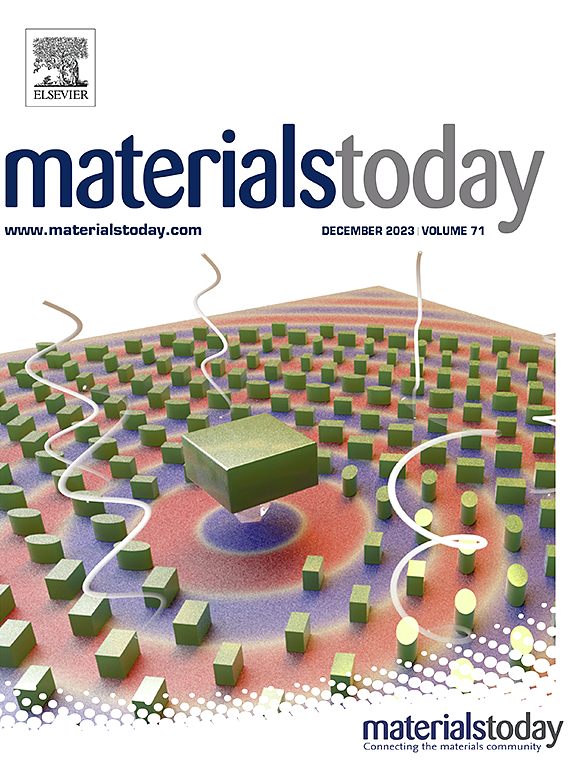Ultralow line edge roughness of hybrid multilayer Extreme ultraviolet resist with vertical molecular wire structure
IF 22
1区 材料科学
Q1 MATERIALS SCIENCE, MULTIDISCIPLINARY
引用次数: 0
Abstract
This study introduces an innovative extreme ultraviolet (EUV) resist featuring a vertically oriented molecular wire architecture, designed to achieve exceptionally low line edge roughness (LER). The resist is synthesized via molecular layer deposition, a gas-phase technique that allows precise monolayer-level control over thickness, ensuring excellent reproducibility, conformality, and uniformity. The hybrid multilayer resist is constructed through controlled ligand-exchange reactions between diethylzinc and 3-mercaptopropanol (3MP), which create vertically oriented molecular wires with widths below 1 nm. This innovative structure achieves an unprecedentedly low LER of 1.37 nm at a dose of 60 mJ/cm2. EUV exposure induces unique cross-linking coordination bonds between the zinc atoms and the oxygen and sulfur atoms in 3MP without degassing, thereby enhancing EUV sensitivity. The combination of vertically oriented high-aspect-ratio molecular wires and effective lateral cross-linking significantly improves EUV sensitivity and robustness during etching. This pioneering hybrid multilayer EUV resist may satisfy the stringent requirements of advanced semiconductor manufacturing.

具有垂直分子线结构的杂化多层极紫外光抗蚀剂的超低线边缘粗糙度
本研究介绍了一种创新的极紫外线(EUV)抗蚀剂,具有垂直定向的分子线结构,旨在实现极低的线边缘粗糙度(LER)。这种抗蚀剂是通过分子层沉积合成的,这是一种气相技术,可以精确地控制单层的厚度,确保出色的再现性、一致性和均匀性。该杂化多层抗蚀剂通过控制二乙基锌与3-巯基丙醇(3MP)之间的配体交换反应构建,形成宽度小于1nm的垂直取向分子线。这种创新的结构在60 mJ/cm2的剂量下实现了前所未有的1.37 nm的低LER。EUV暴露诱导了3MP中锌原子与氧和硫原子之间独特的交联配位键,而不脱气,从而增强了EUV灵敏度。垂直取向的高纵横比分子线和有效的横向交联的结合显著提高了EUV在蚀刻过程中的灵敏度和鲁棒性。这种开创性的混合多层EUV电阻可以满足先进半导体制造的严格要求。
本文章由计算机程序翻译,如有差异,请以英文原文为准。
求助全文
约1分钟内获得全文
求助全文
来源期刊

Materials Today
工程技术-材料科学:综合
CiteScore
36.30
自引率
1.20%
发文量
237
审稿时长
23 days
期刊介绍:
Materials Today is the leading journal in the Materials Today family, focusing on the latest and most impactful work in the materials science community. With a reputation for excellence in news and reviews, the journal has now expanded its coverage to include original research and aims to be at the forefront of the field.
We welcome comprehensive articles, short communications, and review articles from established leaders in the rapidly evolving fields of materials science and related disciplines. We strive to provide authors with rigorous peer review, fast publication, and maximum exposure for their work. While we only accept the most significant manuscripts, our speedy evaluation process ensures that there are no unnecessary publication delays.
 求助内容:
求助内容: 应助结果提醒方式:
应助结果提醒方式:


